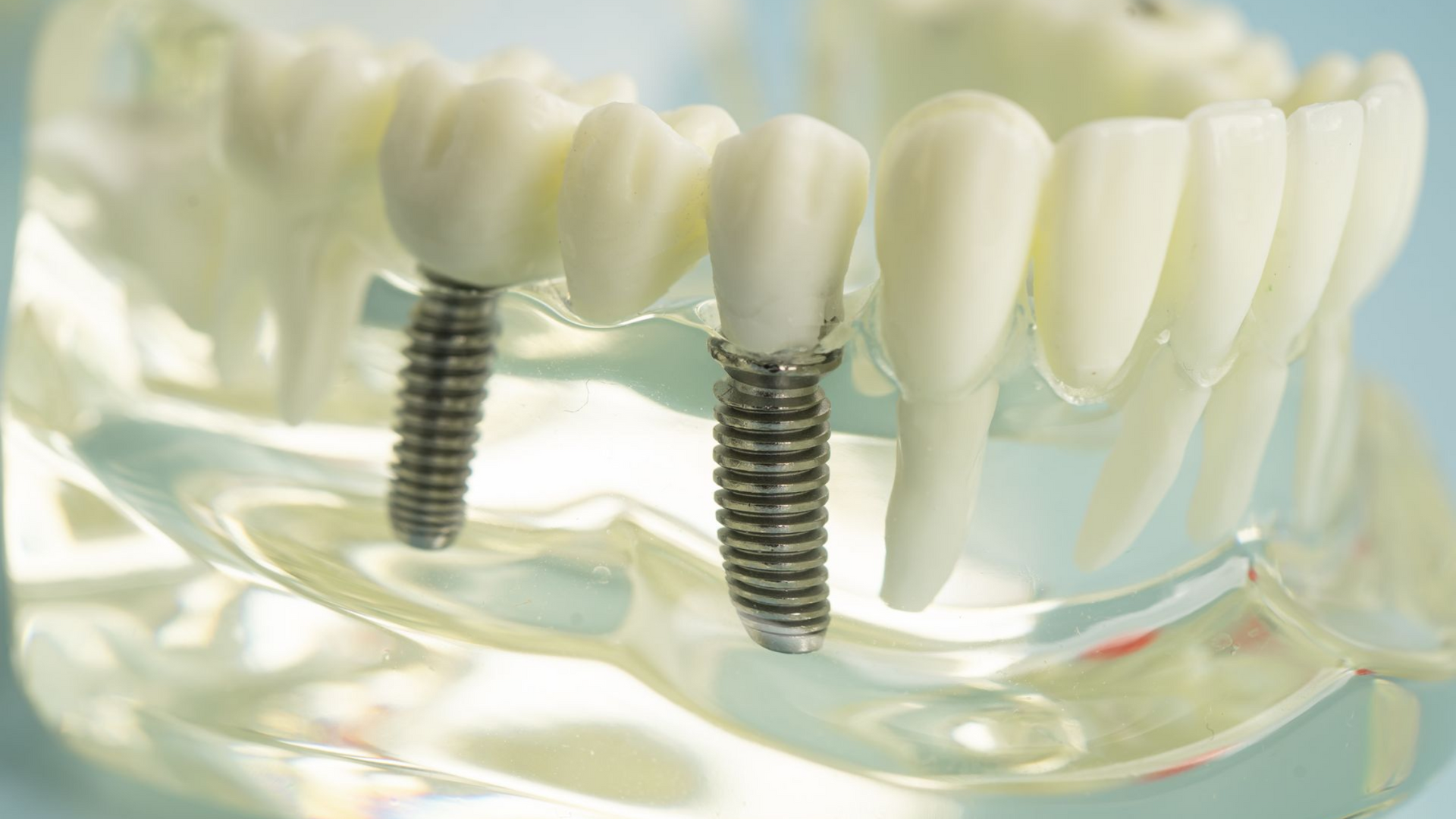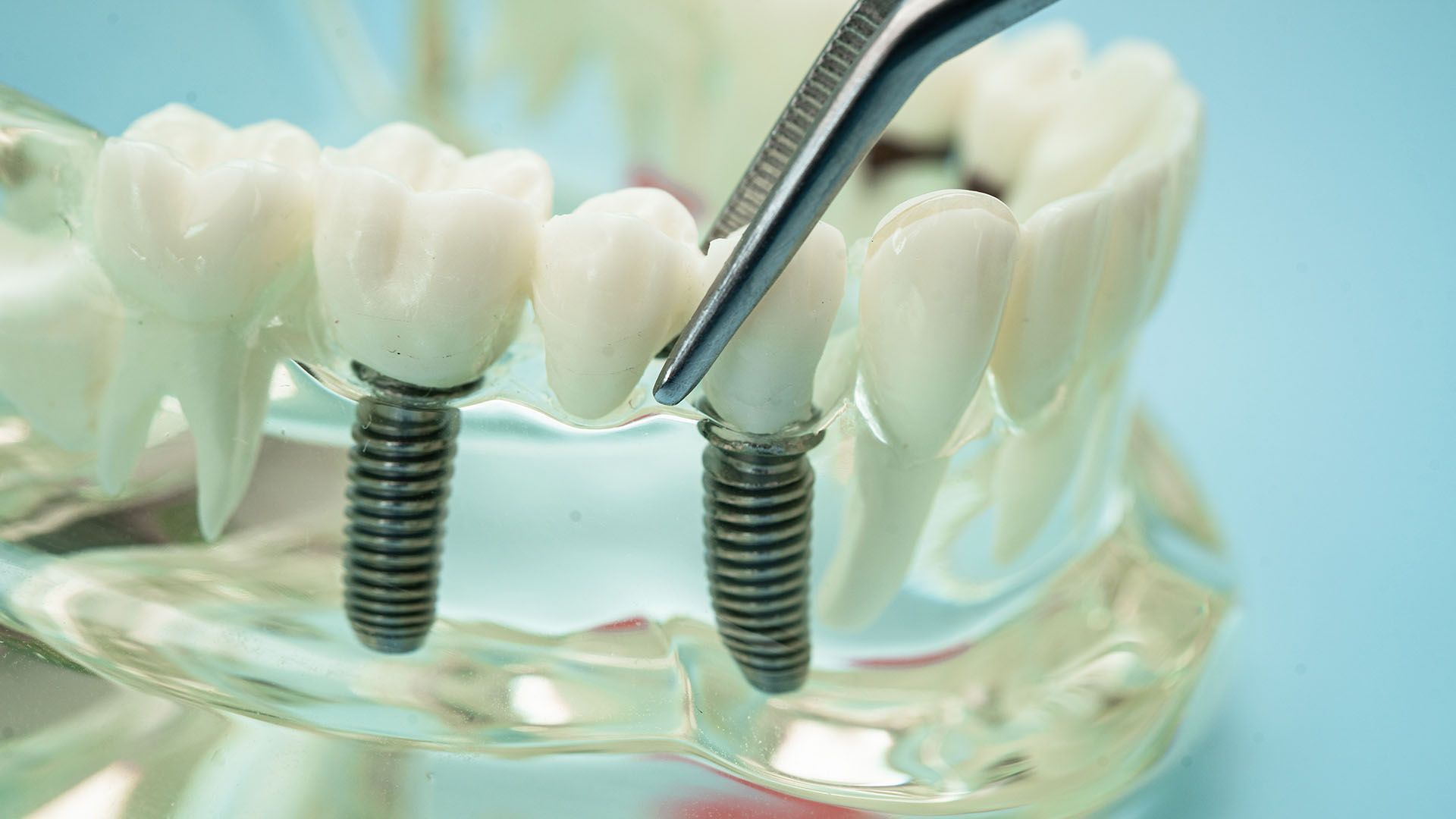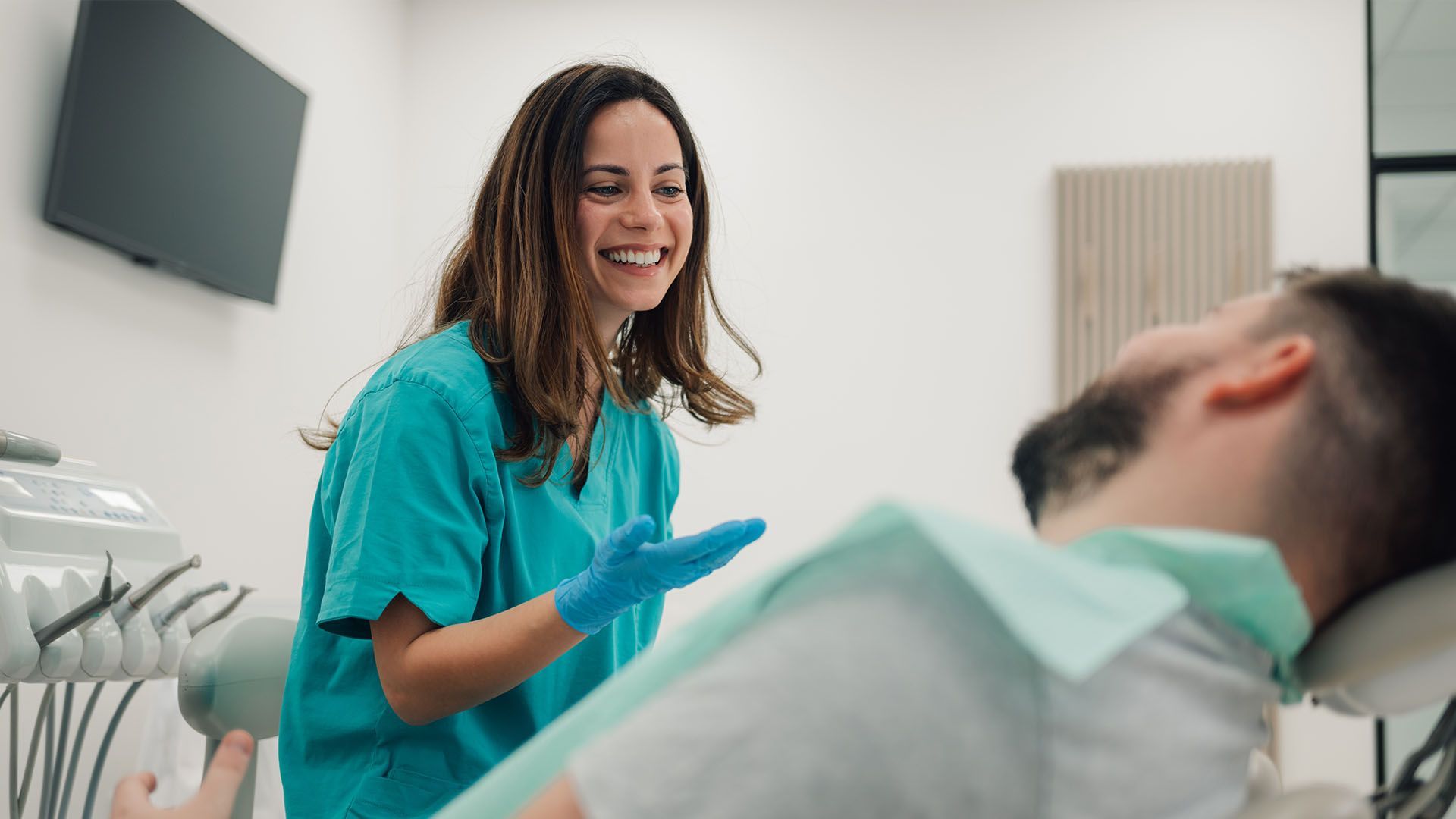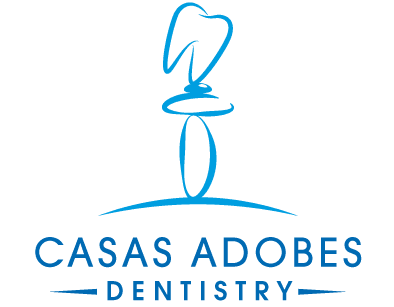How Do All-On-4 Implants Compare to Traditional Dentures

At Casas Adobes Dentistry, our doctors restore full, confident smiles every week. We place and restore dental implants, design fixed full-arch bridges, and fit traditional dentures in-house. Our team uses 3D scans, digital smile design, and evidence-based protocols, and we routinely review real-world outcomes, chewing function, comfort, and maintenance, so patients can decide with clarity. Below, we'll give you straight answers first, then explain the "why," in plain language.
Who this is for: If you're missing most or all teeth (or your dentures aren't working well) and want a clear comparison between All-on-4 (a fixed full-arch on four implants) and traditional dentures (a removable prosthesis), this guide is for you.
What Each Option Means
All-on-4 Implants (fixed full-arch on four strategically placed implants)
The implants are placed at planned angles to maximize existing bone, often avoiding bone grafts. A provisional (“same-day teeth”) bridge is attached the day of surgery or shortly after. After healing, a final custom bridge replaces the provisional.
Traditional Dentures (removable full-arch prosthesis)
A removable plate of teeth you take out to clean and sleep. Upper dentures cover the palate; lowers rest on the gums and rely on anatomy, suction, and fit. They can be adjusted or relined over time as your gums and bone change. Learn more about our denture options.

Who Is a Good Candidate?
Bone Volume, Gum Health, and Medical Factors
- All-on-4 works well even with moderate bone loss because angled implants can avoid grafting. Healthy gums and controlled medical conditions are important.
- Dentures are available to almost everyone, including those who can’t undergo surgery.
Implants need enough bone for stability (osseointegration). Angled placement and longer implants increase contact with bone, often making grafts unnecessary. Severe uncontrolled conditions (like untreated diabetes or heavy smoking) can reduce implant success and may make dentures the safer first step. For patients who do need additional bone support, we offer bone grafting procedures.
Lifestyle and Smile Goals (fixed vs removable)
- Choose
All-on-4 if you want a
fixed solution that feels closer to natural teeth.
- Choose
dentures if you prefer a
removable option, want to avoid surgery, or need the lowest upfront cost.
Fixed bridges don’t come out, which many people find more natural for speaking, eating, and daily life. Removable dentures can be simpler to start and easier to alter if your mouth changes.
Day-to-Day Experience
Stability, Chewing Power, and Speech
- All-on-4: High stability, better chewing efficiency, and clearer speech for most patients.
- Dentures: Can move, especially the lower, and may affect speech until you adapt.
Implants anchor the bridge to bone, so biting forces are transferred more like natural teeth. Dentures rely on fit and suction, which vary person to person.
Taste, Palate Coverage, and Comfort
- All-on-4: No palate coverage; many report better taste and comfort.
- Dentures: Upper dentures cover the palate; some notice reduced taste or gag reflex.
A fixed bridge typically leaves your palate uncovered. Traditional upper dentures cover the roof of the mouth for suction and support.
Aesthetics and Natural Look
Tooth Shape, Gumline, and Smile Design
Both options can look very natural when designed well. Modern materials (zirconia, nano-ceramics, high-quality acrylic) and digital smile design let us match tooth shade, shape, and gum contours to your face. Our cosmetic dentistry team specializes in creating natural-looking restorations.
Facial Support and Lip Profile
- All-on-4: Restores lip and cheek support with a thinner, more natural profile.
- Dentures: Can also support the lips; however, bulk is sometimes needed for retention and may feel fuller.
Because implants anchor the bridge, we can avoid extra thickness in some areas while still supporting facial tissues.
Oral Health & Bone Preservation
How Implants Stimulate the Jawbone
All-on-4 helps preserve bone volume.Implants transfer chewing forces to the bone, signaling it to maintain density (like exercise for bone).
Bone Resorption Risks with Removable Dentures
Dentures do not stimulate bone and may accelerate bone loss over time. Without tooth roots or implants, the jawbone can resorb. That’s why dentures often need relines or remakes as the ridge shrinks.
Treatment Timeline
All-on-4: Consultation to Provisional “Same-Day Teeth” to Final Arch
- Consult & planning: Photos, 3D scan, bite records.
- Surgery day: Implant placement; many patients receive a
provisional fixed bridge the same day or within 24–72 hours.
- Healing: Typically 3–6 months for osseointegration.
- Final bridge: Precise fit, refined bite, and final aesthetics.
Immediate loading is possible when implants achieve good primary stability. The provisional protects the implants and lets you function sooner.
Traditional Dentures: Impressions, Try-Ins, and Adjustments
- Records: Impressions, bite registration, shade selection.
- Try-in: Check tooth setup and smile.
- Delivery & adjustments: Fine-tune sore spots and bite.
- Relines/Remakes over time as the ridge changes.
Soft tissues adapt and change, so dentures are a process with periodic maintenance.
Procedure & Recovery
Surgery Steps, Angled Implants, and Graft-Minimal Approaches
All-on-4 is an outpatient surgery using guided placement; angled posterior implants often avoid sinus grafts (upper) or nerve areas (lower).
Tilting implants increases bone contact and avoids anatomical structures, making a graft-minimal, predictable plan possible. For patients with dental anxiety, we offer sedation options to ensure comfort during the procedure.
Healing, Soft-Diet Guidance, and Follow-Ups
- All-on-4: Expect 3–7 days of peak soreness/swelling, soft diet for several weeks, and check-ups to verify implant stability.
- Dentures: Sore spots are common early; adjustments and soft liners help.
Tissues heal from surgery (implants) or from new pressure points (dentures). Guided follow-ups keep you on track.
Maintenance & Longevity
Daily Hygiene for Fixed Bridges vs Removable Dentures
- All-on-4: Brush twice daily, use a water flosser/implant floss under the bridge, and come in for routine cleanings.
- Dentures: Brush the denture and gums, soak nightly, and remove to sleep.
Fixed bridges need under-bridge cleaning to protect implants and gums. Dentures need full removal to prevent fungal irritation and allow tissues to rest. Regular professional cleanings are important for both options.
Repairs, Relines, and Expected Lifespan
- All-on-4: Implants can last decades with care; bridges may need maintenance (e.g., replacing acrylic teeth or adjusting bite) over the years.
- Dentures: Typically require relines every few years and replacement as the ridge changes.
Bone-anchored implants are stable; materials on top experience wear. Dentures depend on changing gum and bone support.
Cost Considerations
Upfront Fees vs Long-Term Value
- All-on-4: Higher upfront cost, lower long-term maintenance for many patients, better function and bone preservation.
- Dentures: Lower initial cost, but relines/remakes add up over time; function may be limited.
Surgical planning, implants, and custom fixed bridges drive All-on-4 cost. Dentures are less complex to start but may require more frequent adjustments.
Financing and Phased Treatment Options
Many patients use payment plans or phased care (e.g., start with a denture, later convert to implants).
Flexible options align treatment with budget without compromising safety or quality.
Risks and Limitations
Surgical and Prosthetic Complications (implants and bridges)
With All-on-4, risks include infection, implant failure, screw loosening, or fracture of prosthetic materials, uncommon with good planning and maintenance.
Surgery and biomechanics are involved. We reduce risk with 3D planning, guided surgery, follow-ups, and hygiene coaching.
Fit, Soreness, and Stability Issues (dentures)
Dentures can rub, loosen, or feel unstable, especially the lower arch. Adhesives may help but aren’t a cure-all. Without anchors, dentures rely on anatomy and fit, which change over time. If you experience denture issues, our emergency dental services can provide prompt assistance.
Making the Decision
Side-by-Side Summary: Function, Comfort, Care, and Cost
- Function/Chewing:
- All-on-4: Strong, stable, closer to natural.
- Dentures: Adequate for soft foods; may struggle with tougher foods.
- Comfort/Speech:
- All-on-4: Typically easier speech; no palate coverage.
- Dentures: Adaptation needed; palate coverage on uppers.
- Bone Health:
- All-on-4: Helps maintain bone.
- Dentures: Bone loss progresses over time.
- Care:
- All-on-4: Brush + clean under bridge; regular professional maintenance.
- Dentures: Remove nightly; soak and clean; periodic relines.
- Cost:
- All-on-4: Higher upfront, strong long-term value.
- Dentures: Lower initial, more maintenance over time.
Matching the Option to Your Priorities
- Max function, fixed feel, and bone preservation: Lean
All-on-4.
- Lowest upfront cost or no surgery: Lean
dentures.
- Unsure: Consider a stepwise plan (start with dentures, add implants later). Explore all your
tooth replacement options with our team.
Ready for Next Steps?
What to Bring to a Consultation (med list, goals, budget)
- Medical list & allergies
- Medications (especially for bone health, diabetes, blood thinners)
- Your goals: fixed vs removable, foods you miss, smile preferences
- Budget & insurance info (so we can discuss payment plans)
What to Expect at Your Assessment (photos, scans, treatment roadmap)
- Photos & 3D scan for bone mapping and smile design
- Bite records to plan comfort and function
- Clear roadmap: timelines, maintenance, and exact next steps
- Transparent costs and financing options
If you want a fixed, natural-feeling solution that helps preserve bone and restores strong chewing, All-on-4 is often the better long-term choice. If you want the simplest start or need to avoid surgery, traditional dentures can still restore your smile, just plan for more adjustments over time. Either way, we’ll meet you where you are, explain every step, and build a plan that fits your health, goals, and budget.
Ready to explore your options? Contact us to schedule your consultation, or learn more about our comprehensive restorative dentistry services.








